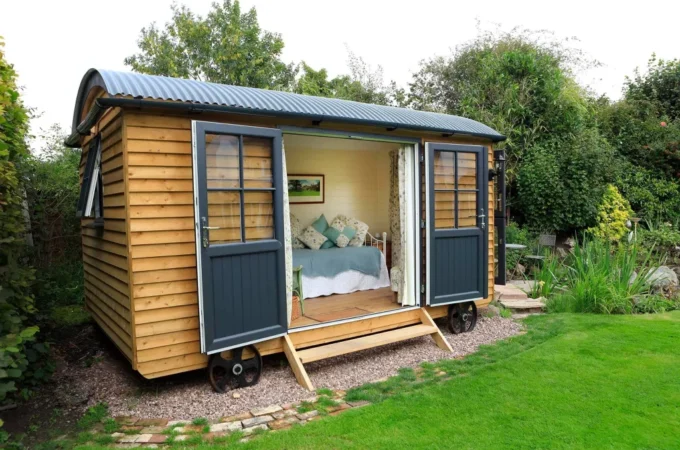
How to Store and Organise Books in a Self-Storage Unit
Whether you are an avid reader or enjoy embarking on a journey through the pages of a book occasionally, storage space might eventually become an issue. Using a self-storage service is among the best ways of fixing this problem.
An excellent self-storage service will allow you to expand your collection while storing your old tomes safely. You might wonder how to best store and organise your books in a self-storage unit, so we are here to help.
What storage boxes or bins do you need
The first step to consider when storing your book collection in a self-storage unit is choosing the right containers for safe storage. Cardboard boxes and plastic bins are the two most popular choices for safely storing your books.
Which one should you choose?
- Material-wise, while cardboard boxes are cheaper and more flexible when it comes to fitting volumes, they’re simply lacking in terms of durability and moisture resistance compared to their plastic alternative. Cardboard boxes could still get the job done, but for a long-term and secure solution, investing in plastic bins will offer more safety for your collection.
- Consider container size in advance. Standard banker boxes or plastic bins of a similar scale are pretty convenient to organise your collection in. You could go for medium-sized boxes, too. Books are precious and delicate cargo, and while a single tome is relatively light, stacking or lining several of them in a box could be surprisingly heavy. You should store around 10 and no more than 15 titles per container, depending on their weight. This will help you avoid massive back pain when loading and unloading. It will also stop the boxes from turning into a hazard for your other belongings during transportation or in the storage unit.
- Choosing a container with a lid is highly recommended for safely transporting and storing your titles. A box with a lid will keep dust at bay and can be fitted with silica bags to control moisture. Choosing a non-transparent container is essential to prevent direct sunlight exposure, which can fade a cover.
How to place your books correctly
Safely storing your books starts long before you reach the storage unit.
The most important things to bear in mind to safely organise your books for moving are:
- Keep the containers light to make them easier to carry and search whenever you need a tome. You don’t have to fill medium boxes all the way.
- Add filler to the storage box to prevent shifting and friction. Towels and bubble wrap are great solutions for added stability.
- Consider the covers, weight and size when you store and organise your books in the containers.
There are three ways of securely storing your books in the container – upright, spine-down or flat. Storing your hardcover books upright, just like on a bookshelf, is recommended to preserve their backing.
Cover the bottom and sides of the storage box with filling to reduce friction and shifting during the haul. Organise the books in two lines, with both lines of hardcover tomes standing upright and spine-against-spine in the storage box.
This will offer more stability and prevent books from shifting and running into one another, which could damage their pages. If there is no space for another line of tomes in the storage box, add more filler to prevent the first one from moving.
For paperback tomes, you could use any of the three methods. It is advised that when stacking, you should use tomes of similar size, weight and shape to prevent warping. Lighter books should always go above the weightier ones, but even then, do not stack more than 4 on top of each other.
Organising your paperback titles spine-down could work well, too, as it keeps the pages safe from warping due to mutual support. Never organise any tomes with their spine up since it could damage their pages and backing.
Once you have your storage containers sorted out, you should label them so you can easily find the tomes you need later. Author and genre labels are the go-tos, but you could also go for alphabetical order if the variety is too wide.
You could attach contents lists to your containers for even easier access to your needed tomes. When you store the containers in your storage area, make sure their labels and lists are facing outward for easier identification when you need a specific title.

Make a thorough check for food and liquid damage
Food and drinks go well with reading, but tomes do not go well with food and liquid spills on them. Before you start storing, ensure that your storage boxes or storage bins are clean with no traces of foods, liquids or mould on them.
It is essential to do that check before and after transportation to the storage facility. Any books that have sustained food or liquid damage during the packing or the haul, or have caught mould, could become a hazard for the other books they share a container with and lead to damage to all of the tomes inside the box.
What type of storage unit do you need for your books
Books are sensitive to humidity, sunlight and temperature fluctuations, so just any storage area might not have the most excellent conditions for them.
When storing temperature-sensitive items, you should opt for climate-controlled units. Even if your tomes are organised adequately in plastic storage containers with lids, mould could still form if the temperature and humidity outside the container are not regulated.
Climate controlled-units will keep the climate stagnant, which is ideal for temperature and humidity-sensitive items, like books. Climate-controlled units are available in every high-quality self-storage facility.
How to protect your books in the storage facility
Some tips for safely storing your books in the storage unit include:
- If you use lidless storage bins, you should use dust covers to avoid dust carpets and the resulting damage.
- When using a transparent or lidless container, place your collection in the corner of the storage space without exposure to direct light.
- Use shelves to keep the containers away from the ground. Elevation will protect your titles from floods, liquid leaks and most pests.
- Use silica bags while organising the storage boxes. This is additional protection against moisture in closed containers.
- Do not stack heavy objects or ones that could leak on top of the book containers.
- Use additional protection for valuable books, such as acid-free tissue.
Consider a climate-controlled self-storage unit, which will address issues like sunlight exposure, excessive moisture and temperature fluctuations.
Conclusion
Self-storage facilities are a great way to keep expanding your volume collection long-term and a safe temporary sanctuary for it when moving.
Contact a professional storage service whenever you need to ensure safe storage space for your tomes.




